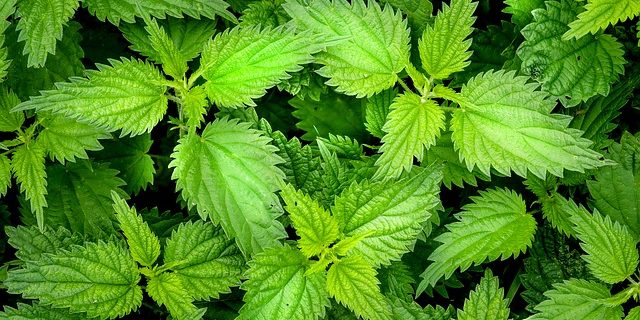When Nettles Aren’t Enough: Welcome to Spring in the Mid-Atlantic
We got a little taste of Spring with a record-breakingly warm February in much of the Eastern and Mid-Western U.S. For us here in the DC/Baltimore area, that meant an unexpected round of very early spring allergies! With actual spring just around the corner, we should be prepared for Round 2 of hay fever.
You’ve probably heard about Stinging Nettles, a natural anti-histamine, for treating seasonal allergies. I can’t say enough good things about Nettles! But sometimes, by themselves, they simply aren’t enough for all that this climate has to throw at us. I use a combination of Nettles, Reishi, Turmeric, Shatavari, and an anti-inflammatory blend from New Chapter called Zyflamend to keep my allergies in check. Some folks use Quercetin in place of the Zyflamend, and I encourage you to experiment with what works best for you. Below is a brief run down of my favorite herbs for spring allergies.
Nettles
Stinging Nettle Leaf, Urtica dioca, is the classic anti-allergy herb. It has natural anti-histimine properties, is rich in minerals, and supports the liver and kidneys. But for some, especially those with severe allergies, Nettles alone may not be enough. Also, in large quantities, Nettles’ astringent properties can be a little drying, especially to those tender, overworked sinuses. To combat this drying tendency, I protect my nose with Shatavari (see below).
Reishi
This beautiful red mushroom, Ganoderma lucidum, works well alongside Nettles for allergy season. It is anti-inflammatory, supports the immune system, and helps the body to deal with stress (and allergies sure do count as stress!) For those who are allergic or sensitive to mushrooms, of course avoid this one, and try Turmeric instead!
Turmeric
Curcumin longum, the bright golden-orange root so well known from curry powder, is an extraordinary healing herb. The anti-inflammatory and cell-protective properties of this plant are truly amazing, and I tend to think everyone should be taking this every day! I use it for joint and muscle pain, and in the spring find it is especially helpful for easing sinus headaches. If you struggle with post-nasal drip, and mucus in the stomach, Turmeric’s astringent properties can help break up and move that mucus on.
Shatavari
Shatavari, Asparagus racemosus, is most often marketing as a “woman’s herb”, used to promote libido and fertility, but Shatavari can do so much more! In the case of allergies, Shatavari has cooling and moisturizing properties that are very specific to the mucus membranes, including those lining the nose and sinuses. This plant can help your nose and eyes from getting dry, red, and irritated in the face of pollen and irritants, and improve the quality of the thin, clear mucus that flushes tiny particles from your upper respiratory system. If you are taking lots and lots of astringent herbs like Nettles, adding Shatavari to your regimen can help prevent your tissue from getting too dry.
Zyflamend
I consider Zyflamend, New Chapter’s best-selling blend of anti-inflammatory herbs, to be one of the “big guns” in the herbal world. In small quantities, it is recommended for soothing minor arthritis pain and protecting the cardiovascular system. But in larger quantities I use this blend to ease the wheezy, congested feeling I get at night during tree pollen season. You’ll have to experiment to find the right dose for you, and it is very spicy, so be sure to take it with food!
Quercetin
For those who don’t tolerate Zyflamend and its spicy attitude well, Quercetin is an excellent anti-inflammatory for allergy season. It is a bioflavinoid compound found in many fruits and vegetables, and is a powerful antioxidant with antihistamine properties as well. For many, this is an indispensable ally during allergy season!
Holy Basil
I will put a little plug in here for another favorite herb of mine, Holy Basil (Ocimum tenuiflorum, or Ocimum sanctum). If you struggle with allergies turning into sinus infections, Holy Basil can help support and protect your upper respiratory system from secondary infection. This lovely and tasty little plant is used to treat cold and flu in its native India. Here in the West, we use it for stress and sugar balance. I couldn’t say whether it is the penetrating properties of Holy Basil that helps prevent infection, or the stress relief. Either way it’s a good thing to have on hand during the worst of allergy season.








